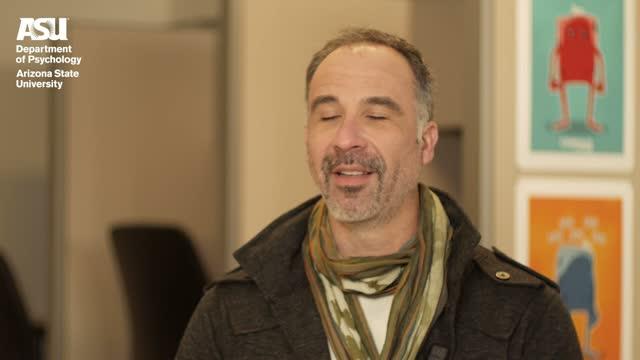
VIDEO: Armando Pina, of the Arizona State University Department of Psychology, describes an upcoming study in the Journal of Clinical Child and Adolescent Psychology. Pina, Antonio Polo from DePaul University, and… view more
Hispanic and Latino youth are more likely to drink alcohol at a younger age than their African-American and non-Hispanic Caucasian peers, but they are less likely to receive treatment for substance abuse.
African-American youth show more symptoms of attention deficit hyperactivity disorder than their Caucasian peers, but they are less likely to receive appropriate treatment for disruptive behaviors.
The suicide rate among Native Americans has been outpacing the rest of the country since 2003. Suicide is the second leading cause of death among Native American adolescents, and there are very few effective interventions.
A research team made up of experts from Arizona State University, DePaul University and the University of Southern California has evaluated the effectiveness of interventions for mental health problems like substance use, disruptive behaviors and suicide prevention in ethnic minority American youth. The study, which was commissioned by Division 53 of the American Psychological Association, will be published February 12 in the Journal of Clinical Child and Adolescent Psychology.
“This careful study provides a benchmark for evidence-based interventions in minority youth, which is central to providing effective care to the diverse youth population and will be very useful to funders of research, payers of healthcare and family members,” said Margarita Alegria, professor of psychiatry at Harvard Medical School and Chief of the Disparities Research Unit at Massachusetts General Hospital. Alegria was not involved in the study. “This evaluation also sets the groundwork for the future, by identifying the need to focus on the development and evaluation of more interventions for minority groups that have not yet been addressed, like Asian Americans, Native Americans and youth who do not speak English.”
Ten years ago, there were zero evidence-based interventions for American ethnic minority youth that met the strongest criteria and were considered well-established.
Now there are four.
Well-established and evidence-based
To evaluate the effectiveness of mental health interventions for ethnic minority youth, ASU’s Armando Pina, associate professor of psychology, worked with Antonio Polo, associate professor of clinical psychology at DePaul University, and Stanley Huey, associate professor of psychology and American studies and ethnicity at the University of Southern California. The trio rated evidence-based interventions designed to target problems like anxiety, depression, disruptive behavior, substance use, trauma and stress reactions and self-harm or suicide. In total, the team evaluated 65 interventions that had either analyzed the impact on ethnic minority participants or been tested on a participant group that was at least 75% ethnic minority youth.
The highest rating was “well-established” and included interventions that were tested using randomized controlled experimental designs, had been replicated by more than one research group and demonstrated benefits to the youth that were statistically significant.
The four interventions that met the well-established criteria were designed to treat anxiety, disruptive behaviors and substance use in ethnic minority youth.
The team found cognitive behavioral interventions were effective at helping Hispanic and Latino youths experiencing anxiety. These interventions teach strategies to change problem thinking patterns and behaviors and often include social skills training.
Interventions that involved parents, called family therapy, helped African American youth struggling with disruptive behaviors and Hispanic and Latino youth with drug or alcohol use problems. Including the family, school system or peer networks in therapy to address disruptive behaviors was also effective in helping African American youth.
“Parents and caregivers need to know that for some of the most common problems children and adolescents face, there are well-established treatments that have been systematically tested,” said Pina, who was the lead author on the study. “They should demand children get these empirically-supported treatments and interventions.”
From bench to bedside
On top of the four well-established interventions, the researchers identified other treatment programs that met less-stringent rating criteria and could be considered best practices in the future.
The analysis also determined which mental health problems did not yet have effective interventions for ethnic minority youth and which minority groups were underrepresented. There were no well-established interventions for depression, trauma and stress reactions, self-harm, suicide or the co-occurrence of more than one problem, like anxiety and disruptive behaviors. And, none of the 65 studies analyzed by the research team included enough Asian American or Native American participants to evaluate whether any of the interventions were robust for these populations.
“Including Native American youth in research studies is important and requires working directly with Tribal nations because they regulate research within their communities. Researchers must invest considerable time to build relationships and establish trust to gain Tribal approval for a research study,” said Monica Tsethlikai, assistant professor in ASU’s T. Denny Sanford School of Social and Family Dynamics and an affiliate faculty member of the university’s American Indian Studies program. Tsethlikai was not involved in the study. “Native Americans also have a unique worldview that includes a metaphysical perspective of health and well-being that does not fit within Western interventions, so effective interventions would need to originate from a foundation of respect and reciprocity and would have to be congruent with the lived experiences of Native American youth.”
The team advocated for more research that includes underrepresented ethnic minority populations. Because the trajectory of an evidence-based treatment program from a research setting into the real world takes 17 years on average, the researchers also suggested future work should focus on the development of streamlined methods to develop interventions and test how well they work.
“Research should move outside of the lab and into the community,” Pina said. “Intervention scientists need to increase collaborations with established systems of care and real-world providers, who are under real-world constraints.”
###
Disclaimer: AAAS and EurekAlert! are not responsible for the accuracy of news releases posted to EurekAlert! by contributing institutions or for the use of any information through the EurekAlert system.

